Moving heavy furniture can be a real challenge. If you don’t know the right way to do it, you can damage your furniture, scratch the floors, or hurt your back. But with the right tools, a little planning, and smart techniques, moving furniture can be much easier and safer.
As a professional moving company, we have years of experience in moving furniture without damage. That’s why we’ve shared our expert tips and tricks, which we use every day to protect your home, furniture, and health.
How to Move Furniture Without Damage?
When you’re moving to a new home or just rearranging the furniture in your current space, taking the proper steps can save you from costly repairs and unnecessary frustration. Here are some expert tips to help you move furniture safely and without damage.
1- Plan Everything
Before lifting anything, take a moment to plan your move. Measure your doorways, hallways, stairs, and elevators to make sure your furniture will fit through easily. Think about the layout of your new space and how the furniture will fit once it’s moved. This will help you avoid awkward situations where you might need to force items into spaces they don’t fit.

2- Gather the Furniture Moving Tools
The right tools can make a huge difference in the ease and safety of moving heavy furniture. Some essential furniture moving tools include:
- Furniture sliders: These are small pads that fit under the legs or edges of your furniture, allowing you to slide items without lifting them. They are especially useful for hardwood floors.
- Dollies: A dolly can carry heavy furniture like sofas, dressers, and tables. It helps distribute the weight and reduces strain on your back.
- Furniture straps: These allow you to lift and carry large items more easily, provide extra leverage, and help to prevent strain or injury.
- Moving blankets: Use these to wrap your furniture for protection. They help prevent scratches, dents, and other damage.
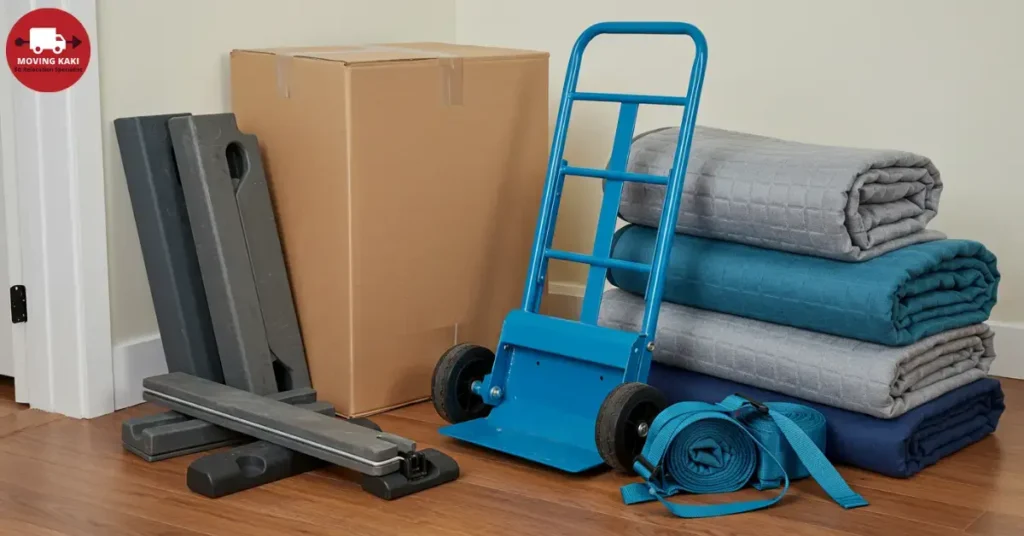
3- Use Plastic Furniture Covers for Moving
You can also protect your furniture by using plastic furniture covers for moving. These covers act like a protective shield, keeping your items safe from dust, dirt, moisture, and scratches during the move. They’re especially helpful for soft, upholstered furniture like sofas, chairs, and mattresses. To use them, wrap the plastic cover around the furniture and secure it with tape or stretch wrap. Make sure the cover fits well without too many loose areas, and this keeps it from slipping off.

4- Disassemble Large Furniture
If possible, disassemble larger pieces of furniture before moving them. This could include removing the legs from a table, taking shelves out of a cabinet, removing cushions from a sofa, or breaking down a bed frame into smaller pieces. Disassembling furniture makes it lighter, easier to carry, and much less likely to bump into walls or get stuck in doorways.
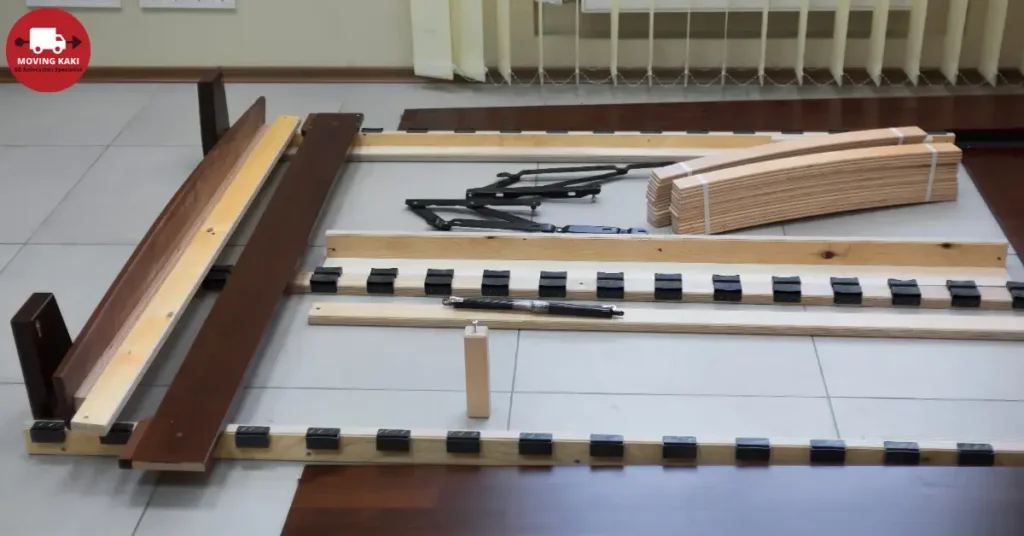
5- Lift with Proper Technique
When lifting heavy furniture, always remember to lift with your legs, not your back. Squat down and use the strength in your legs to lift, and keep your back straight. When moving heavy furniture, always have a second person to assist with the heavier items. We recommend hiring movers to move furniture, which is also a great option if you’re not comfortable moving large, heavy items by yourself.
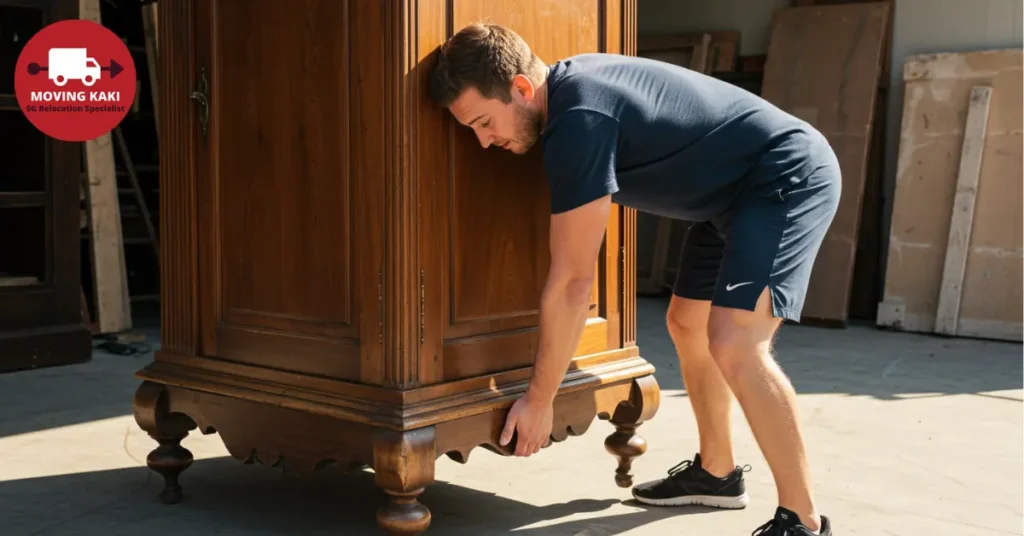
6- Use Furniture Moving Equipment for Heavy Items
When you’re dealing with heavy or bulky furniture, using the right moving equipment can make a huge difference. Tools like a dolly or hand truck help you move large items more easily and safely. Instead of dragging furniture across the floor, which can damage both the furniture and your flooring, you can roll it smoothly using this equipment. However, you can also use furniture straps to keep items secure while moving. These tools also reduce the strain on your body, especially your back and shoulders.
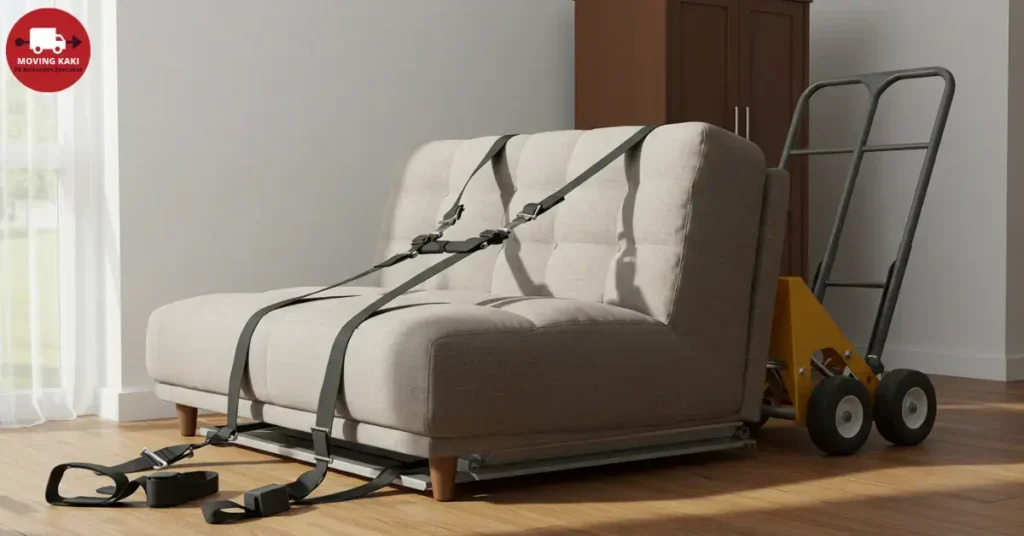
7- Take Care of Your Floors
Heavy items can leave scratches, dents, or marks, especially on hardwood, tile, or laminate flooring. Even carpets can get stretched or torn if you’re not careful. To avoid damage, use furniture sliders or moving pads under the legs or base of each item. These help the furniture glide smoothly across the floor without causing any harm. If you don’t have sliders, a blanket, a towel, or even pieces of thick cardboard can work as temporary protection. Just place them under the furniture before sliding.
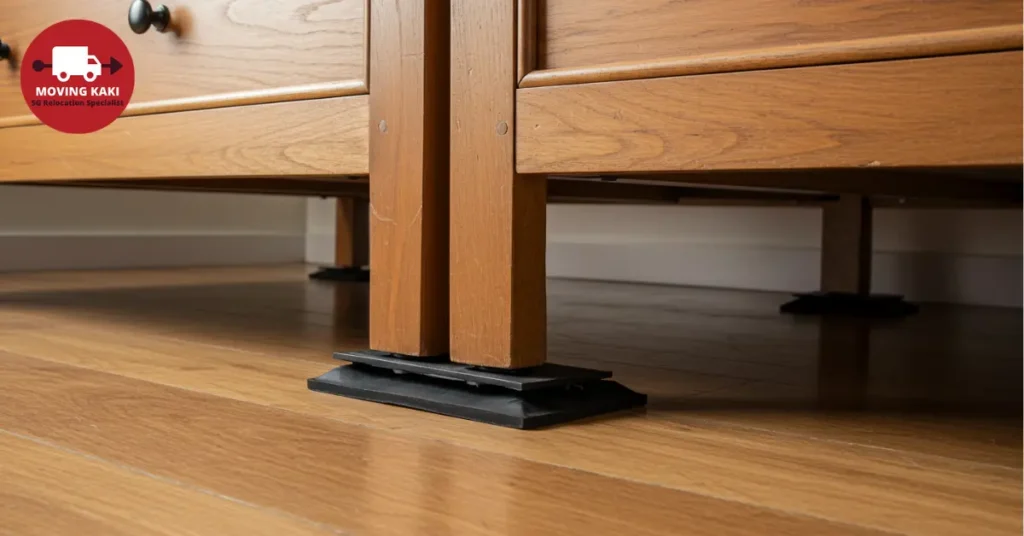
8- Plan the Route in Your New Home
Before you start carrying furniture inside, take a few minutes to plan where each piece will go and how it will be arranged. Walk through your new home and clear any obstacles, such as rugs, boxes, or small tables, that could get in the way. Make sure doorways, hallways, and staircases are wide enough for your larger items to pass through easily. By mapping out the route in advance, moving becomes faster, safer, and a lot less frustrating.

Expert Tips for Moving Large Furniture
Moving big furniture? These expert-backed tips will help you handle the toughest pieces without stress or damage.
Disassemble When You Can
Break down large items, such as bed frames, tables, or bookshelves, to make them lighter and easier to carry. Keep screws and bolts in labelled bags to prevent loss.
Protect Your Furniture and Home
Wrap furniture in blankets or towels, especially corners and delicate areas. One of the easiest ways to prevent furniture damage while moving is to pad sharp corners and use soft materials between your furniture and walls.
Use Proper Lifting Techniques
If lifting feels risky or you’re moving items alone, tools like dollies or shoulder straps are great alternatives. They help you move furniture without lifting while keeping things under control.
Use Furniture Moving Equipment
Furniture sliders, hand trucks, and shoulder straps make a big difference. These tools save your strength and protect your flooring.
Get Help If Needed
Never try to move heavy furniture alone. Ask friends or family for help, or consider hiring professional movers if your items are large or the route is particularly challenging.
Double Check Your Path
Measure doorways and turns again before lifting the item. Don’t rush. A small mistake can lead to a big mess or injury.
Conclusion
Moving furniture without damage requires careful planning, the right tools, and extra effort. By using the proper furniture moving equipment and some smart techniques, you can protect both your furniture and your home from damage. Whether moving across town or rearranging a room, these expert tips will make your move less stressful and more efficient. If you are unsure about doing this yourself, we recommend hiring furniture moving services.
FAQs
How to move furniture without damaging it?
Wrap your furniture in blankets and protect fragile edges with foam or bubble wrap. Always lift properly and avoid dragging items across the floor.
How do I protect my floors while moving furniture?
Use cardboard sheets, rugs, or felt pads along high-traffic areas. It’s a simple way to move furniture without scratching floor surfaces, especially in tight hallways.
Can I rent furniture-moving tools instead of buying them?
Yes, many hardware stores and furniture moving service providers offer rentals for dollies, sliders, and straps. This is a cost-effective option for one-time moves.
How to move furniture without scratching the floor?
Use furniture sliders or soft towels under each leg. If you’re moving furniture on hardwood or tile, this is the easiest way to move furniture without scratching the floor.

